Mai Tai Rum(s): Myths and Mistakes
Given some recent developments in Tiki rum land, I want to outline some history and perspective regarding the rum(s) to use for a classic Mai Tai. But before diving in, there are two things I need to state up front:
Make your Mai Tai however the hell you enjoy it. Use whatever rums work best for your preferences.
The focus here is replicating the “OG” 1944 Mai Tai. I’m deliberately not addressing the Royal Hawaiian and similar style “Pineapple” Mai Tais that arose in the 1950s. They’re different drinks.
With these caveats out of the way, many tropical drink enthusiasts strive to make an authentic, original Mai Tai as close as possible to what Trader Vic created in 1944. What follows below builds on information I’ve presented in prior articles:
Generation Gap — The Tiki Revival
A generation of today’s bartenders (amateur and pro) came of age studying the excellent writings of Jeff “Beachbum” Berry. In his seminal 2007 book, Sippin’ Safari, the Mai Tai recipe specifies:
1 oz aged Jamaican rum
1 oz amber Martinique rum
The recipe notes, “As served at Trader Vic’s in Havana Cuba, 1958,” a point I’ll return to later.
Now, about that Martinique rum. The same generation of bartenders who’ve read this recipe and its many derivative versions quite reasonably assumed that Martinique rum meant rhum agricole. After all, the readily available Martinique rums on store shelves are rhum agricole.
Key Point #1: Words and phrases can change meaning over time. Commercially available Martinique rum available in the 1950s was overwhelmingly molasses or cane syrup rum rather than rhum agricole. The articles listed above provide historical citations to support this assertion. And no, the commercially available molasses rums of the 1950s were not grand arôme like those used in Denizen’s Merchant’s Reserve. (It is tasty, though!)
Vic’s description of Martinique rum from his 1946 book, along with his rum list at the time, is strong evidence that the “Martinique rum” he used was not rhum agricole:
Today’s bartenders, by following the recipe literally rather than its intent, unintentionally veer astray from Vic’s original Mai Tai. I’m not pointing fingers here, as the recipe’s intent wasn’t well known until recently,
Key Point #2: While the Mai Tai is the focus here, the changed meaning of “Martinique rum” also affects many other Golden Era recipes that also used Martinique rum. Classic recipes like the Three Dots and a Dash and the Donga Punch also didn’t use rhum agricole when they were created. Do what you will with this information.
So Now What Do We Do?
Let’s now stroll down the path of what Martinique rum means in a modern context. In the absence of any commercially available Martinique molasses rum, what are some reasonable substitutes?
I’ve previously noted (here and here) that Martinique’s sister overseas departments, Guadeloupe and Réunion, make a substantial amount of molasses-based rum in the classic French style. Examples include Darboussier and Rhum DBM from Guadeloupe, as well as Savanna and Isautier from Réunion. They are flavorful, yet quite different from Jamaica’s signature rum flavor profile.
In The Essential Tiki Rum Style That Disappeared, I posited that Holmes Cay’s 3-Year Réunion Island Rhum Traditionnel was the first French-style molasses rum to be available in the US at a reasonably affordable price:
For American consumers, it may be the best currently available choice to substitute for a Martinique rum in vintage tiki recipes… That said, I can’t promise you that the Holmes Cay Rhum Traditionnel tastes exactly like the Saint-James, Rhum Charleston, and Negrita that Vic and Don used in the 1950s.
I have pestered Eric Kaye (of Holmes Cay) for a longer-aged version of this rum, along with a splash of caramel. Fingers crossed that we’ll see something like this in the US at some point.
An Alternate Take
More recently, leading Mai Tai enthusiast Kevin Crossman (The Search for the Ultimate Mai Tai) also wrote about this Holmes Cay rum:
… is it the rum you want for a second adjusted formula Mai Tai? No, no it isn’t.
…
So if you’re trying to replicate the second adjusted formula, this rum isn’t it; we suggest Worthy Park 109 as a readily available substitute that tastes like Vic described it.
However, the article later notes:
…Réunion Island Rum Traditionnel is fantastic in a Mai Tai.
In essence, Kevin asserts that Worthy Park’s 109 Jamaican rum is a better choice in a 2nd adjusted Mai Tai than Holme’s Cay Réunion Traditionnel.
Who’s right? Well, there’s a twist, so read on.
Trader Vic Speaks
In his now-famous 1970 letter titled “Let’s Set the Record Straight on the Mai Tai,” Vic outlines the drink’s evolution from its 1944 creation, which used 2 ounces of Wray & Nephew 17-year-old rum. Vic later switched to Wray & Nephew 15, as the supplies of the 17-year had dwindled.
Even later, in the 1950s, due to the “…end of a dependable supply of the 15-year old J. Wray Nephew,” Vic changed to a blend of Jamaican rums:
1 oz 15-Year Wray & Nephew
1 oz Coruba or Red Heart
When the supply of W&N 15-Year also dwindled, it caused “… Trader Vic to make private arrangements, in the interest of high quality, to blend and bottle a Jamaican rum under his own label and control.”
Summarizing the above, Vic’s first four Mai Tai iterations used:
Wray & Nephew 17-year
Wray & Nephew 15-year
Wray & Nephew 15-year and Coruba/Red Heart
A custom Jamaican rum blend bottled for Trader Vic.
It seems clear that Vic really wanted only Jamaican rum in his Mai Tais. Only later did his “2nd Adjusted Formula” introduce a non-Jamaican rum:
1 ounce Trader Vic’s Jamaican Rum (15 or 8 year old)
1 ounce Martinique Rum (St. James or Trader Vic’s)
Note: This jibes with the Sippin’ Safari 1958 Mai Tai from the Havana Trader Vic’s.
I know many of you spotted the St. James and thought, “Aha! That’s rhum agricole!” However, St. James produced both cane syrup and cane juice rums well into the 1980s. I’ve tasted 1950s-era St. James rum made from cane syrup. (See image and red underlined text above.) While delightful, it didn’t taste at all like rhum agricole to me.
Key Point #3: Vic’s Mai Tais solely used Jamaican rum until running out of acceptable options. I contend that the 2nd Adjusted Formula was a necessary accommodation, rather than an improvement on his original rum iterations.
Given this, I wonder why so many people choose an interpretation of Vic’s 2nd Adjusted Formula when there’s plenty of hardy Jamaican rums available. Why use an understudy when the star performer is available?
Sure, if you have a 1950s-era Negrita, St. James, or Rhum Charleston at your disposal, please try out the 2nd Adjusted Formula — and invite me over! But in the absence of such rums in your bar, two ounces of a Jamaican rum (your pick) might be a better choice.
This is effectively what Kevin Crossman suggests when asserting that Worthy Park 109 works better than Holmes Cay Réunion Traditionnel in an OG Mai Tai. However, this abandons the notion of using Vic’s 2nd Adjusted Formula. An ounce of Worthy Park 109 and an ounce of some other Jamaican rum gives you …. two ounces of Jamaican rum! Just like Vic used in the first place!
As for me, I often use an ounce each of Smith & Cross and Planteray Xaymaca. It incorporates rum from most of Jamaica’s distilleries, and the blend is a perfect 50% ABV.
Hopefully, the above has provided some useful historical context and given you a framework for your own rum choices when making Tiki’s most beloved recipe.
What do you think? Share your thoughts in the comments!



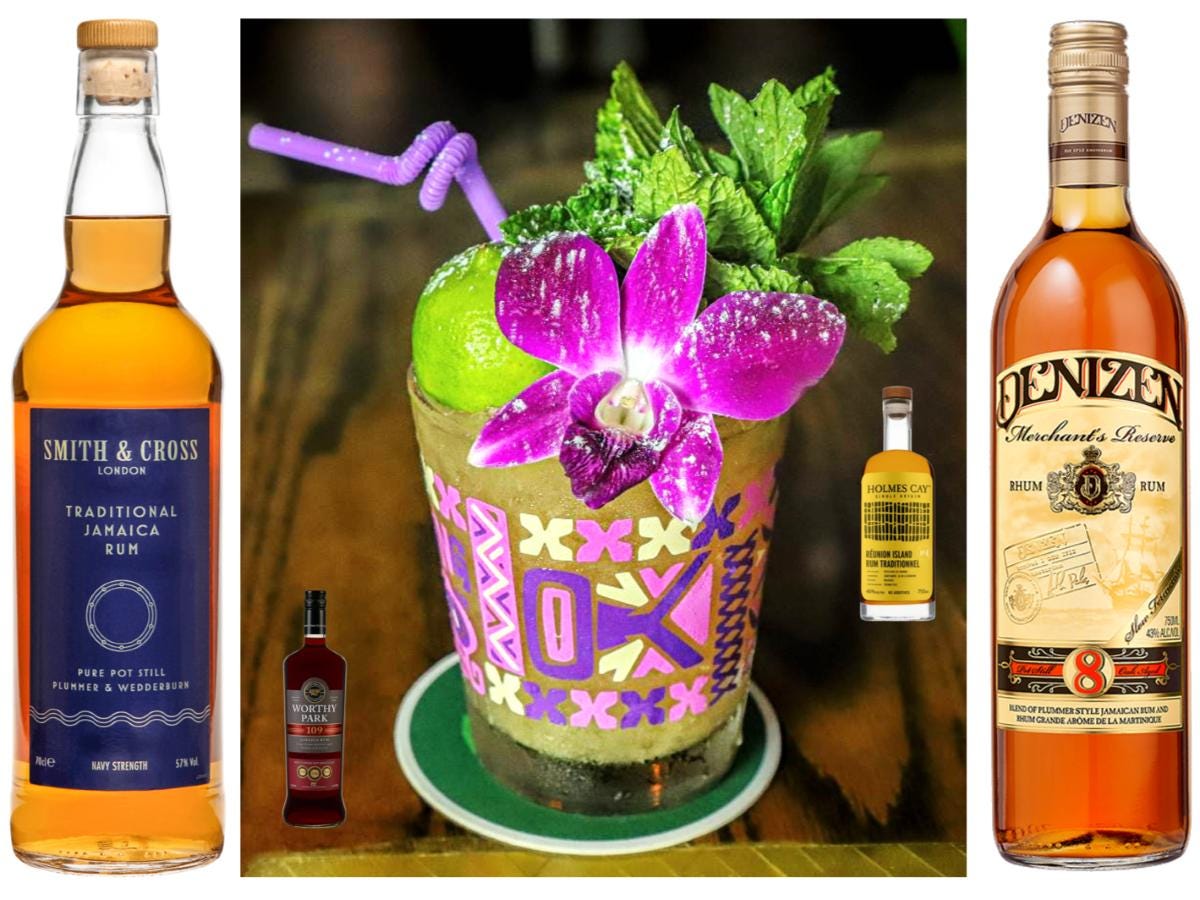

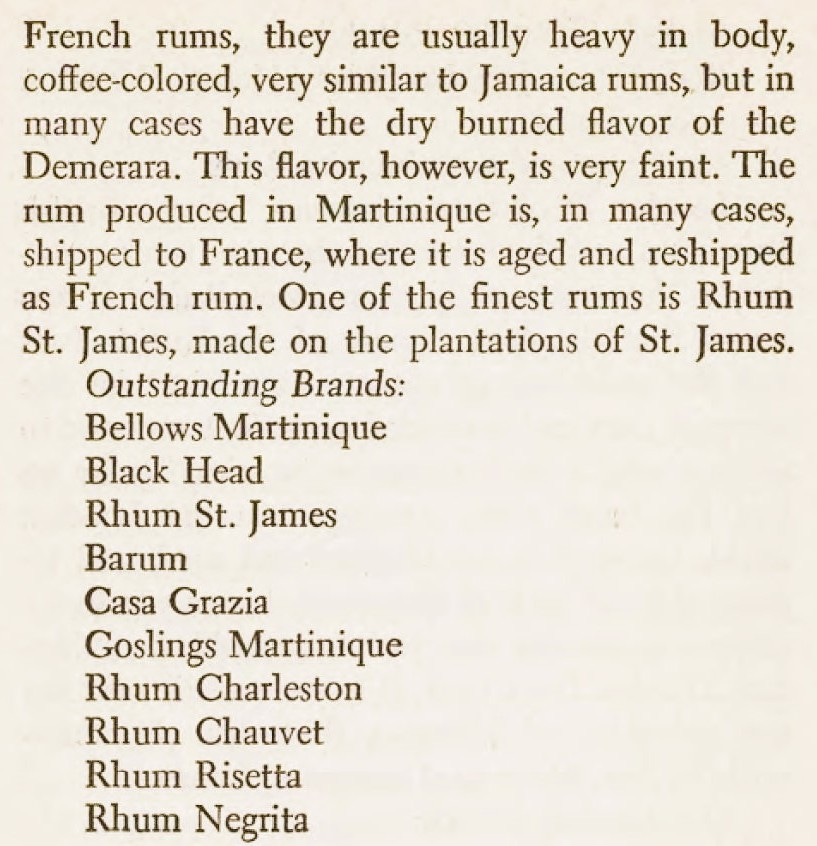
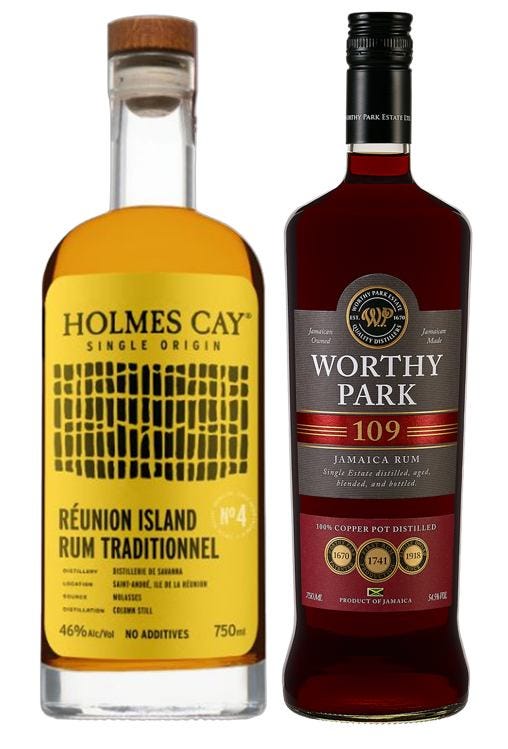
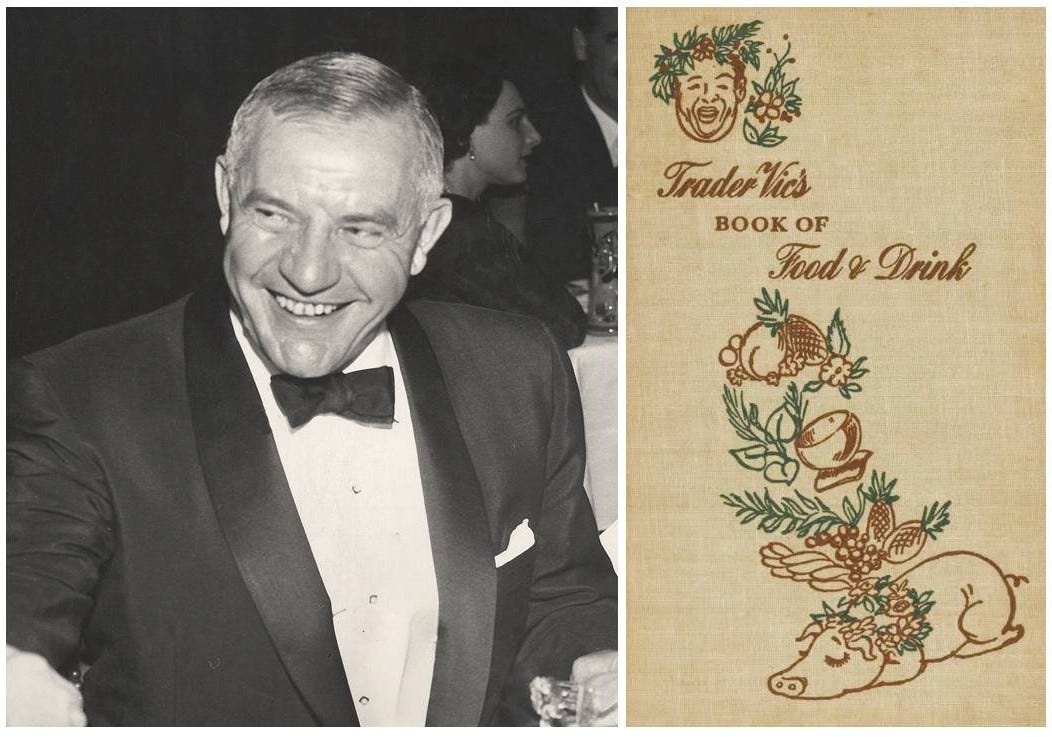
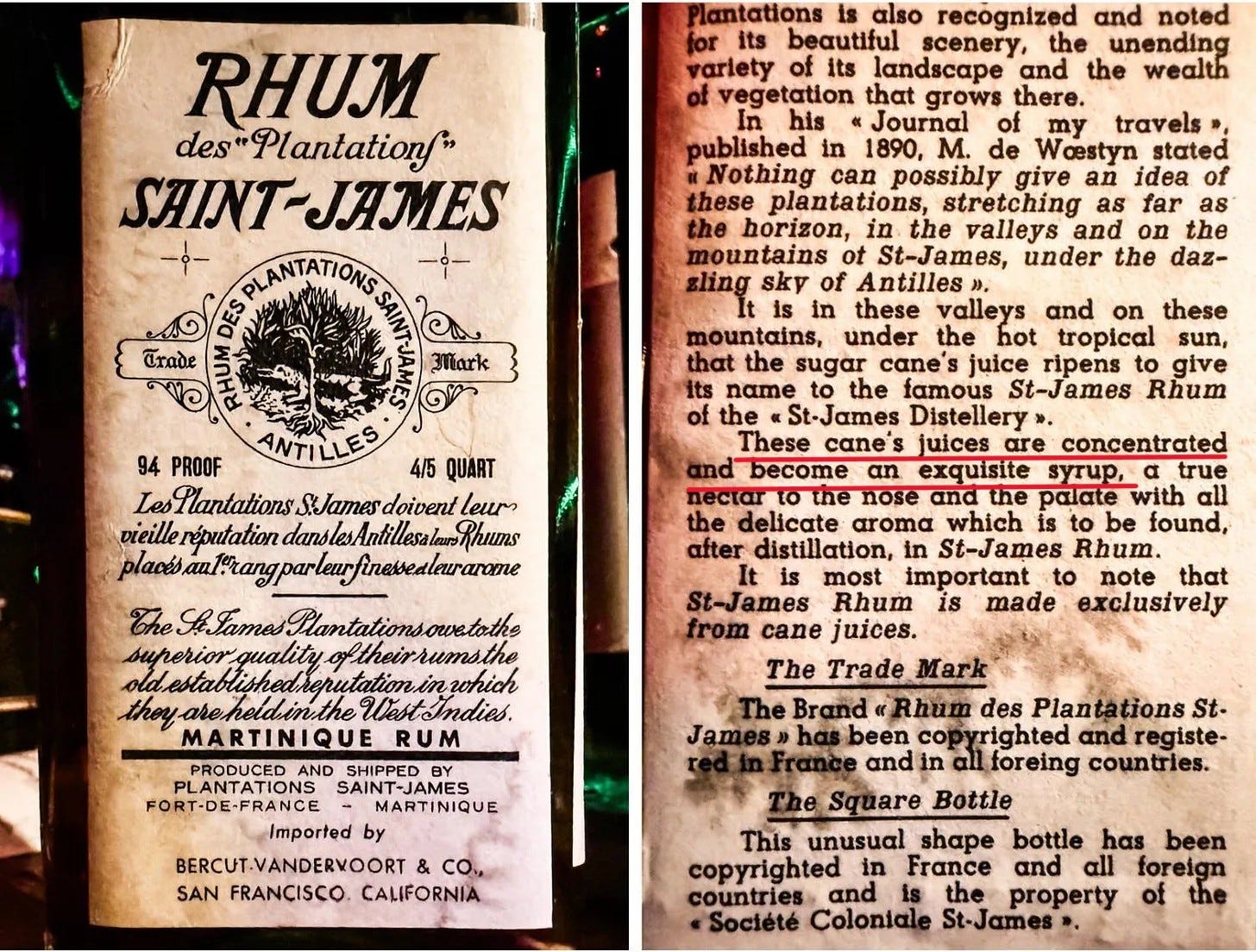


When I read Vic’s description of a Martinique Rhum, the currently available rum that seems closest to me is Worthy Park 109 (dark, Jamaican style, hint of the Demerara). That why I suggested it here, not because I want all Jamaican rum. I don’t think the Holmes Cay is a good sub in this recipe, at least based on how Vic described the rum. Again I will emphasize that the Holmes Cay just by itself is really fantastic in a Mai Tai, and very approachable.
I agree with you, I’d love to see a French rum made in this style with caramel color.
I am not a purist but I build a mai tai most weekend afternoons (especially if I can budget a later nap). I like 3 oz of rum instead of 2, and quite a bit of mint in the shaker. I use Smith & Cross, Pusser’s Navy, and any on hand of a Jamaican or other dark, including Planetary, Myers in an emergency, Zacapa 23 If I’m feeling fancy, then 0.75 oz of dry orange curaçao (or Gran Marnier if I run out) and between 0.5-1.0 oz of orgeat, dictated by how tart and juicy are the limes on hand. I have been surprised how many bartenders at upscale bars are not familiar with the traditional recipe, but most are willing to give it a go, with varying success and final price charged.